George Taylor | |
|---|---|
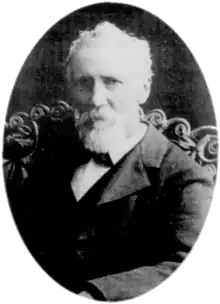 | |
| Born | September 6, 1838 |
| Died | April 5, 1913 (aged 74) Fredericton, New Brunswick, Canada |
| Years active | 1856–1906 |
| Known for | Photography and painting[lower-alpha 1] |
| Spouses |
|
| Children | 6 |
George Thomas Taylor (September 6, 1838 – April 5, 1913) was a Canadian photographer and painter whose work depicts the landscapes and everyday life of nineteenth-century New Brunswick. He is regarded as a pioneering nature photographer in Canada.
Taylor was born in Fredericton, New Brunswick. He developed an interest in photography and in 1856, he began his career, during which he documented and photographed provincial locations, including the Tobique Valley. In the early 20th century, when photography was becoming more accessible, Taylor retired and took up landscape painting, which he continued until his death in 1913. Taylor often used his own photographs as references. As of 2023, hundreds of Taylor's images are preserved and have been exhibited at the Provincial Archives of New Brunswick.
Early life and career
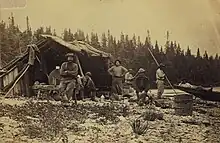
George Thomas Taylor was born on September 6, 1838, in Fredericton,[2] a British garrison town in the Colony of New Brunswick.[3] His father William P. Taylor had migrated from London, England, and worked as a carpenter. George Taylor's mother was Frances (Morrison) Taylor; George was the middle child of five siblings,[2][4] and the family lived in a house William built in 1846.[5][6] George developed an interest in photography through borrowing magazines from soldiers at the local garrison,[7] which led him to pursue a self-study of photography, particularly its scientific concepts..[1] During his teenage years, Taylor started creating daguerreotypes,[7] and while working as a carpenter in the 1850s and 1860s, he continued to develop his photographic skills. He was also a self-taught painter, although the wife of a captain of the 22nd (Cheshire) Regiment gave him lessons.[4]
In 1856, Taylor, guided by a local portrait photographer, began working as a photographer.[4] The same year, he built his first camera and began producing daguerreotypes.[6] Taylor borrowed and read English periodicals from Garrison officers to deepen his understanding of photography.[4] With the help of his father,[8] Taylor had built a basic camera by 1860, at the age of 22, while accruing knowledge of the collodion process.[1][4] He later established his first studio at the intersection between Queen and Carleton Streets, Fredericton.[1]
In 1860, Taylor was married to his first wife Sarah George, who died in 1866. In 1868, he married Mary Avery and had six children with her.[4] They remained married until Avery's death on February 14, 1905, at the age of 66.[9]
Photographic career
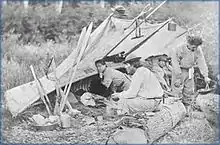
Taylor expanded his photographic work beyond his studio in Fredericton.[4] In the early 1860's, he developed a friendship with Arthur Hamilton Gordon, the last Lieutenant Governor of New Brunswick before the colony's Confederation.[7] In 1863, Gordon commissioned Taylor to document various provincial locations,[4] and with a reference letter from the governor, Taylor embarked on an expedition to the Tobique River, becoming one of the first photographers to explore it.[7] During this period, officers from imperial regiments stationed in Fredericton, who were impressed by his photography skills, also commissioned Taylor. When the forces relocated to Halifax, Nova Scotia, Taylor was encouraged to join them.[1]
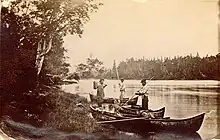
During his expeditions, Taylor formed friendships with Maliseet peoples, including a notable individual known as Gave Acquin, with whom he frequently collaborated while exploring the province.[4] According to an exhibit chairwoman, Taylor could fluently speak the Maliseet language.[10] He traversed the forests and river valleys of New Brunswick by canoe,[11][12] and was aided by First Nations guides who referred to him as "Garge".[7] While on his expeditions, Taylor used a portable darkroom to process photographs, and took with him all of his equipment, including this portable darkroom, camera, chemicals and negatives.[11] Taylor revisited the Tobique River in the following decades.[7]

Taylor, who continued to live in Fredericton after 1896,[1] earned an income from making studio portraits of notable individuals, though his main interest was landscape and scenery photography.[12] His collection mostly consisted of images of New Brunswick, including rivers, towns, mills, lumber camps, hunters, fishermen, and indigenous guides.[7]
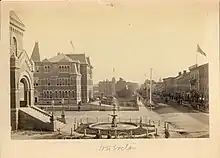
In 1868, examples of Taylor's work were featured in the inaugural edition of Canadian Illustrated News, a national news magazine.[4] Government and local businesses often commissioned Taylor to photograph unexplored regions of New Brunswick. For example, the New Brunswick Railway Company commissioned him to photograph sites along the route to Edmunston before tracks were laid west of Fredericton.[1] During his career, Taylor expanded his house to add a portrait studio.[6]
During the 1870s, Taylor may have faced financial difficulties: this is indicated by his advertisements for the sale of his negatives. During his career, Taylor used several photographic processes, including daguerreotypes, wet plates, and dry plates.[4] He kept his knowledge updated through publications like The Philadelphia Photographer and experimented with stereoscopic and conventional cameras. Occasionally, he experimented with trick photography. In 1873, Taylor described himself as a "photographic artist", according to a carte de visite he issued.[7] In 1879, in Saint John, Taylor attended a presentation by geologist Edward Jack, who featured Taylor's photographs.[13]
Later life and death
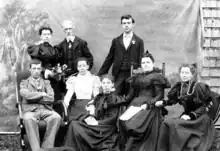
Taylor's final photographic expedition occurred in 1906,[7] for which he returned to the Tobique River.[4] Following this expedition, Taylor shifted his focus from photography to oil and watercolour painting, despite his work in those media being less popular that his photographic work.[4][1]
Taylor went onto lead a quiet life;[14] he retired from photography due to the growing popularity of amateur photography brought about by the increased accessibility of cameras,[7] which resulted in reduced demand for Taylor's photography.[1] As he moved to painting, Taylor frequently used his photographs as references,[7] often creating scenes that were inspired by New Brunswick forests.[15][7] The Government of New Brunswick collected Taylor's his paintings, including four that are displayed at Old Government House in Fredericton.[7]
On April 5, 1913, at the age of 74, Taylor died in his Fredericton residence.[16] His funeral took place three days later at his home, and he was buried in Fredericton Rural Cemetery. Taylor was survived by two siblings and all of his children.[17] The house where he spent most of his life, known as the William Taylor House, is now a historical landmark that displays a plaque in his memory.[1][6]
Legacy
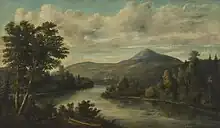
George Taylor is recognized as one of the earliest photographers in New Brunswick[11] but remains relatively unknown beyond the province, despite his status as a pioneering Canadian nature photographer.[12][19][20] Taylor's extensive body of work depicts everyday life in nineteenth-century New Brunswick.[5][21][8][15] Taylor's photography was published in the book Slow Seconds: The Photography of George Thomas Taylor.[22] Ronald Rees, one of the book's authors,[11] described Taylor as "the first wilderness photographer in the Maritimes and one of the first in all of Canada".[23]
A private exhibition was held on March 28, 1968, at Beaverbrook Art Gallery to show recently donated artworks. Included were eight oil paintings and four watercolor paintings by Taylor. Civic dignitaries attending included Lieutenant Governor Wallace Samuel Bird and his wife, Premier Louis Joseph Robichaud, Government and Legislative Assembly members, and the mayor of Fredericton along with his wife.[24] Later the same year, during the opening ceremony of the Provincial Archives of New Brunswick, a selection of Taylor's images were exhibited.[25] The archive houses a preserved collection of hundreds of Taylor's images,[1][4] including nearly 900 glass negatives, which were shown in a 2019 exhibit titled Glass Plate Alchemist.[11]
Notes
References
- 1 2 3 4 5 6 7 8 9 10 11 "PHSC: Excerpts: Volume 24-1". www.phsc.ca. Archived from the original on September 23, 2023. Retrieved July 4, 2023.
- 1 2 "Taylor, George Thomas - ArchivesCANB". search.canbarchives.ca. Archived from the original on September 23, 2023. Retrieved July 5, 2023.
- ↑ "Fredericton | New Brunswick, Canada |". www.britannica.com. Britannica. Archived from the original on February 20, 2023. Retrieved July 5, 2023.
- 1 2 3 4 5 6 7 8 9 10 11 12 13 14 "George T. Taylor - ArchivesCANB". search.canbarchives.ca. Archived from the original on September 23, 2023. Retrieved July 4, 2023.
- 1 2 "Slow Seconds 101". Goose Lane Editions. Archived from the original on September 23, 2023. Retrieved July 4, 2023.
- 1 2 3 4 "William Taylor House House". mynewbrunswick.ca. September 28, 2014. Archived from the original on September 23, 2023. Retrieved July 4, 2023.
- 1 2 3 4 5 6 7 8 9 10 11 12 13 "Pioneer Photographer George T. Taylor Gave New Brunswickers An Early View of Their Spectacular Wilderness…and More" (PDF). The Associates of the Provincial Archives of New Brunswick. Archived (PDF) from the original on September 23, 2023. Retrieved July 3, 2023.
- 1 2 "George Thomas Taylor". mynewbrunswick.ca. June 13, 2020. Archived from the original on September 23, 2023. Retrieved July 2, 2023.
- ↑ "DEATHS IN FREDERICTON". da.tj.news. The Daily Times. February 14, 1905. p. 7. Archived from the original on September 23, 2023. Retrieved July 5, 2023.
- ↑ "George Thomas Taylor". da.tj.news. New Brunswick Telegraph Journal. June 19, 1999. p. 82. Archived from the original on September 23, 2023. Retrieved July 4, 2023.
- 1 2 3 4 5 Chisholm, Cassidy (September 29, 2019). "With a camera and canoe, early photographer captures 19th-century life". CBC News. Archived from the original on September 23, 2023. Retrieved July 3, 2023.
- 1 2 3 "Throwback Thursday: The pioneering photography of George T. Taylor". canadiangeographic.ca. Archived from the original on September 23, 2023. Retrieved July 4, 2023.
- ↑ Rees, Green 2019, p. 7.
- ↑ "OBITUARY - George Thomas Taylor". Daily Telegraph. April 19, 1913. Archived from the original on September 23, 2023. Retrieved September 3, 2023.
- 1 2 "Biography – TAYLOR, GEORGE THOMAS – Volume XIV (1911-1920) – Dictionary of Canadian Biography". www.biographi.ca. Archived from the original on September 23, 2023. Retrieved July 2, 2023.
- ↑ "George Thomas Taylor". Daily Telegraph. April 19, 1913. Archived from the original on September 23, 2023. Retrieved September 3, 2023.
- ↑ "The Late George T. Taylor". da.tj.news. The Daily Gleaner. April 7, 1913. p. 8. Archived from the original on September 23, 2023. Retrieved July 17, 2023.
- ↑ "Inventory Detail Page". Waddingtons.ca. Archived from the original on September 23, 2023. Retrieved July 4, 2023.
- ↑ MacLean, Andrew. "Backyard history: The province's first outdoor photographer you already know". TJ.news. Archived from the original on September 23, 2023. Retrieved July 4, 2023.
- ↑ "Many Firsts Recorded In New Brunswick". da.tj.news. Telegraph Journal. May 26, 1978. p. 28. Archived from the original on September 23, 2023. Retrieved July 5, 2023.
- ↑ "Taylor documented N.B. in 19th century". da.tj.news. Saint John Telegraph Journal. March 30, 2002. p. 53. Archived from the original on September 23, 2023. Retrieved July 4, 2023.
- ↑ Fitzherbert, Corinne (January 21, 2020). "Archivist keen to share 'Slow Seconds,' depicting historical images". The Victoria Star. Bugle Observer. Archived from the original on September 23, 2023. Retrieved July 4, 2023.
- ↑ Rees, Green 2019, p. 8.
- ↑ "Private Showing March 26". da.tj.news. Telegraph Journal. March 15, 1968. p. 3. Archived from the original on July 17, 2023. Retrieved July 17, 2023.
- ↑ "Archives Open". da.tj.news. The Daily Gleaner. May 30, 1968. p. 1. Archived from the original on July 4, 2023. Retrieved July 4, 2023.
Bibliography
- Rees, Ronald; Green, Joshua (2019). Slow Seconds: The Photography Of George Thomas Taylor. Fredericton, New Brunswick: Goose Lane Editions. ISBN 9781773101361. Retrieved October 12, 2023.
External links
- Biography at the Dictionary of Canadian Biography Online